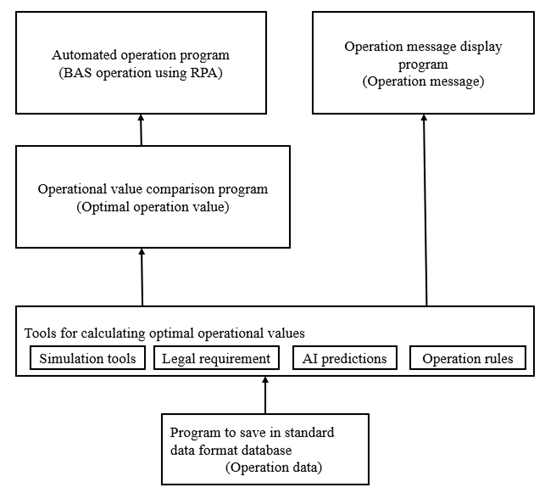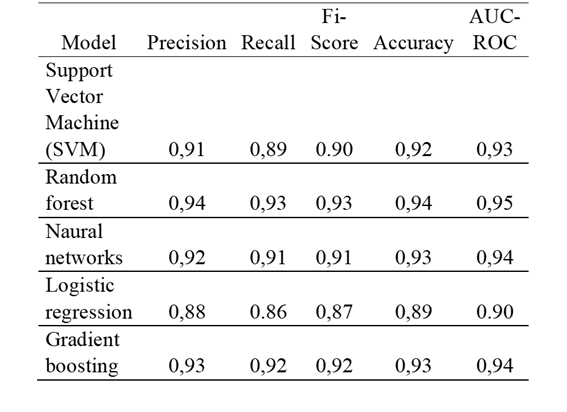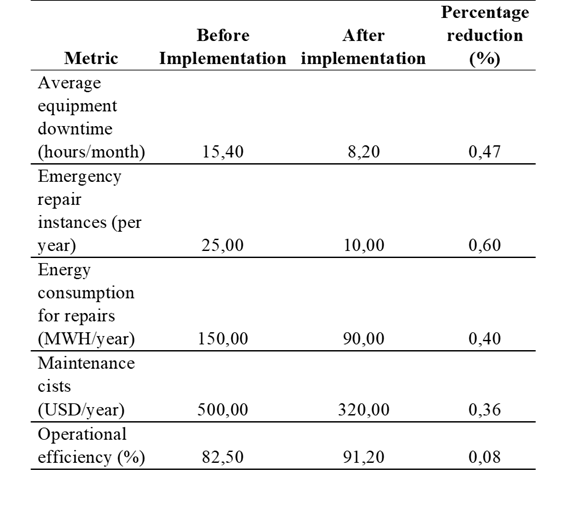INTRODUCTION
In express mechanical workshops, there is a lack of control over various aspects of their operations, which leads to excessive energy consumption. This is often due to the absence of adequate maintenance plans, downtime, and logistical issues when creating new work orders. This situation is exacerbated by the lack of accurate monitoring and recording of all tasks and processes performed, so the system concept is to get all the data about the machines usage, then tabulate, process and get an clear vision about how these are running, in a period of time heading to decisions to fix the issues if they belong to machine errors or human problems. Additionally, in the current context of an energy crisis, many centers and workshops are forced to rely on combustion-powered generators to meet their electricity needs. This reliance increases costs associated with fuel, acquisition, and maintenance of such generators, highlighting the urgent need to optimize energy consumption as much as possible.
Given this issue, it is essential to develop a system that integrates operational and administrative areas. This paper presents a mechatronic solution to adapt machinery into an ecosystem that maintains accurate and automated records using IoT. These records, when analyzed with artificial intelligence (AI), enable the generation of predictive maintenance plans, which can prevent future issues that could lead to unnecessary energy costs, as an example on the automotive industry modern cars use IoT for sending data about tire pressure, the state of the oil, temperature of the motor and so forth, the data is used for planning an predictive maintenance avoiding unexpected stops and helping with the gas consumption.
Once a database of machinery operation and energy consumption is available, an alternative energy system can be better dimensioned to manage and administer electricity supplied from external sources, bypassing the public electrical grid.
As a result of implementing this system with tools such as SVM, Random Forest, and Neural Networks [1], these technologies demonstrate superior efficiency compared to similar systems in generating predictive maintenance plans [2]. The system operates by creating a database that captures the behavior of an express mechanical workshop, characterized by a high flow of vehicles that require only minor repairs or maintenance. Once this data is obtained, an AI-driven maintenance and action plan is generated, significantly improving the workshop’s performance and reducing material and energy consumption, ultimately enhancing productivity.
EXPRESS MECHANICAL WORKSHOPS
An express auto repair shop is a specialized establishment on maintenance, and automotive quick repair services, the main characteristic is the kinds of generally utilizing advanced technology to optimize resources and time, that is, the vehicle does not remain in the workshop for more than a day. These centers combine traditional mechanical services with quality control systems, digital diagnostic equipment, and, in many cases, emerging technologies such as the Internet of Things (IoT) and Artificial Intelligence (AI) tools for predictive maintenance. The main objective of an express auto repair shop is to provide efficient management that ensures the safety, performance, and durability of vehicles through professional administration of the automotive maintenance life cycle.
Unlike conventional workshops, express auto repair shops adopt preventive and predictive maintenance practices to anticipate potential failures and optimize the use of energy and material resources. These strategies are based on data analysis and the integration of cyber-physical systems, where the workshop tools can be considered intelligent components within an interconnected system [3]. In this way, the express auto repair shop functions not only as a repair space but also as an innovation hub within the automotive sector, especially in the context of the Fourth Industrial Revolution, where advanced diagnostic tools play a crucial role [4].
Also known as an automotive service center, an express auto repair shop is designed to perform preventive maintenance on vehicles, meaning that processes are carried out to prevent potential failures rather than resolve them. It is also characterized by a higher vehicle turnover compared to a traditional mechanical workshop, as the work performed typically takes no more than a couple of hours, ensuring that no vehicle remains on the premises for an entire day.
ADQUISITION DATA SYSTEM
To generate the database needed for the corresponding analysis, modules with sensors capable of accurately transmitting signals like temperature, current and proximity, that reflect the behavior and usage of the various machinery used in an express auto repair shop are utilized [5]. These modules consist of a sensor and a microprocessor with Wi-Fi connectivity, enabling data to be sent to the cloud, these devices use Wi-Fi 802.11 protocol that is the most common allowing a range of data transmission velocities from 11 up to 150 Mbps. In this way, real-time monitoring is possible, allowing data acquisition regarding the usage and performance of the machines.
In the following diagram, the operational scheme of the monitoring system is represented in a simplified manner, showing how sensors are integrated to connect to a network where devices and machinery communicate. This setup enables the display of real-time operational variables, providing insights into productivity and individual resource consumption for each device and machine used in an express auto repair shop, thus creating an intelligent system that after its application the time , as is shown on the following diagram how the process starts from the machines working, then the sensors taking data and sending to the cloud, the data being tabulated and interpreted by AI and shown on a graphic display.
IoT applied in machinery
Each machine used must have a system that generates a usage and behavior history, as well as environmental variables that can be recorded in a computerized system.
For this purpose, IoT is applied to each machine in such a way that it integrates into the system, enabling real-time monitoring through sensors and connected networks. This allows real-time communication and monitoring of the different machines within the shop, bringing the current operation closer to an Industry 4.0 environment, where human presence is increasingly less necessary for process supervision because there is no need for a person to check on the status of the machines due to the fact that the sensors are taking care the important metrics on the devices and this is possible via IoT, all the information is process and given to the administration department with a clear guide of what is the action protocol to be done, so the only decision to be made is when to execute this plan.
If IIoT (Industrial Internet of Things) is integrated with AI, we can create a system that not only monitors the machines but, through the analysis and processing of IoT-generated data, also develops tools that facilitate decision-making and operational efficiency within the shop.
Data Acquisition Methodology
Since continuous machinery monitoring is necessary, specific types of sensors will be adapted to withstand the constant and intense use characteristic of work in an automotive workshop. The operational environment is also assessed, as it directly impacts the wear and tear on both the machinery and data acquisition devices, the system will evaluate the work done by timing it, then comparing with an optimal range of time database for each machine and each case like size of tire. Therefore, for each specific case, appropriate sensors are selected like for example the MAX6675 with a K-type thermocouple for temperature, the ADXL345 accelerometer for vibration monitoring, the LJ12A3-4-Z/BX inductive sensor for proximity detection, and the Honeywell Micro Switch V7 for mechanical position sensing, along with the necessary microprocessor or embedded chip, to enable unidirectional communication between the devices and the control and monitoring system using an Wi-Fi protocol to send all the data to a private cloud.
DATA MANAGEMENT AND ANALYSIS
The data received from the cloud will undergo a series of mathematical algorithms that tabulate, classify, and process the data to be presented in a graphical environment, facilitating understanding and analysis.
AI is used for post-processing this data, analyzing the results to determine a methodology or guideline for correctly and specifically applying predictive maintenance in this case study. This approach enables a complete analysis of the workflow without the need for direct personnel intervention and without invasive access to the machinery, thus avoiding downtime and saving administrative costs [6], reducing the response time and planning time that takes to generate a predictive maintenance plan, so this result translates on higher productivity because the repair stops are planned ahead, so all the process reflects on a better stat of the number of services given to the customers.
PREDICTIVE MAINTENANCE USING AI
Artificial Intelligence (AI) is a highly important technology in engineering, as it enables various approaches to solving specific issues. This solution framework is built on tools such as SVM, Random Forest, and Neural Networks, which can be used through IoT. By employing this methodology for data management and analysis, predictive maintenance can be applied. Through continuous analysis of machinery behavior, a history is generated. By setting thresholds, potential failures can be accurately predicted. With knowledge of the impending fault and its cause, a predictive maintenance plan can be created, saving both energy consumption and various costs that a failure would incur.
Allowing AI to generate responses and make decisions by considering all variables improves operational dependency, as quick responses and an efficient action plan are obtained to address all aspects involved in a potential failure [7].
This process of analysis and decision-making based on all established and input variables is managed under a scheme where data is first standardized. Then, the data is processed under specific guidelines, such as legal requirements, operating regulations, AI predictions, and simulation tools. This approach generates operational messages, which are the results of AI after analyzing the database and creates an automated operation program that includes the predictive maintenance plan and the allocation of material and energy resources. This scheme, in general terms, is represented in the following diagram.
Fuente: [6]
Since this algorithm is followed, one of the three tools with the best performance for generating predictive maintenance plans-SVM, Random Forest, and Neural Networks-is used. The table below shows their superior effectiveness compared to other Machine Learning tools.
This table allows us to assess the accuracy and effectiveness based on relevant indicators regarding the performance of each Machine Learning tool when creating logistics and planning for efficient predictive maintenance.
Using these tools, a specific operational scheme is developed that incorporates the predictive maintenance plan based on each machine’s behavior data. The integration of AI and databases revolutionizes data management, enabling automated decision-making and efficient processing of large datasets. AI analyzes patterns and predicts outcomes, while databases provide robust infrastructure for data storage and access. This synergy drives innovation, improves operational efficiency, enhances automation, and optimizes decision-making across industries and diverse applications. The interaction between the software and this data is as follows:
In this way, the generated database is continuously processed, resulting in real-time monitoring of the express auto repair shop’s performance. This allows for the determination of the need to apply predictive maintenance, when necessary, thanks to the anticipation of events provided by the IoT system combined with Machine Learning and the data acquisition ecosystem integrated within the shop.
ENERGY CONSUMPTION OPTIMIZATION
The results of predictive maintenance and monitoring in an express auto repair shop are reflected in energy savings achieved through process optimization and the prediction of potential issues, such as failures, unexpected shutdowns, and downtime. This ensures a constant workflow, generating higher profits with reduced energy consumption.
As shown in the table below, a case study on a vehicle mechanic workshop illustrates the results in terms of energy savings when applying Machine Learning to maintenance and process management and various metrics that are evidence of the improvement that means applicate a system like this [9].
This allows us to confirm the effectiveness of using Machine Learning and IoT in an integrated system to optimize the operations of an express auto repair shop, reducing its energy consumption. The energy results derivates from a better management, for example after applying an system of this kind the uptime increases on a 90% to 95%, the failure rate gets from 5 to 2 cases monthly and also the Mean Time Between Failures (MTBF) increases from 200 hours to 400 hours [10], these parameters are evidence of the interaction between IoT and ML on a system, the dynamic that involve these two tools is described in five stages:
Data recollection.
Feature engineering
Algorithm selection and training
Deployment and integration
Continuous Learning
SYSTEM INTEGRATION IN AN EXPRESS AUTO REPAIR SHOP
The synergy between all parts of the proposed system and the elements (machinery and workshop staff) that make up the express auto repair shop is achieved through administrative actions based on the results of the AI-implemented algorithm. Once the analysis is generated, the administrative department creates an action plan that includes specific work protocols and a maintenance plan for each machine. Additionally, training sessions or new operational methods are organized to improve and coordinate the workshop staff [11].
Monitoring each station in the express auto repair shop allows for behavior analysis over time, revealing types of failures-whether operator errors or machine faults. The model is trained after entering a complete database about the acceptable timing taken for a worker to complete an specific activity, for example there is a range of time for taking out a pneumatic from a rim, so when a machine is activated a timer will star and then this timer will be compared with an optimal time range so in that way can be determinate if the operation was done correctly and efficient. Once identified, a record is created, and a learning system is applied to automatically recognize failure trends and predict when they may occur. This enables time for planning and proactive action, resulting in a continuous workflow without unexpected stoppages or temporary interruptions in the shop’s service.
CONCLUSIONS AND RECOMMENDATIONS
As a result, implementing a system that enables real-time monitoring and, at set intervals, generates an automatic analysis of the management and performance of an express auto repair shop provides a comprehensive positive outcome like reducing the respond times and inactivity, increasing the overall productivity and reducing the maintenance general costs. This system impacts both the administrative and workshop areas, creating continuous communication channels that facilitate decision-making backed by an AI system that accurately predicts upcoming failures and creates predictive maintenance plans, the benefits proved by Easy-Manit is the reduction of repair costs by predicting problems and planning with time the necessary stops. The administrative department gets the advantage to get directly the information of the status of the workshop, not only regarding the machinery component also includes the human resources, facilitating the analysis, and management of resources in general based on trustful automatically generated information. This reduces operational costs and promotes efficient management of energy resources, making it an innovative project that enhances the shop's productivity and provides a sustainable response to the country's current energy crisis.
As a recommendation is imperative to create an own database with the timings of the workers on an specific workshop because these metrics will variate depending on the training and expertise of the human resources of each worshop.




















